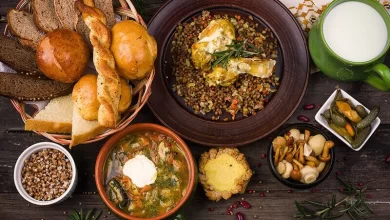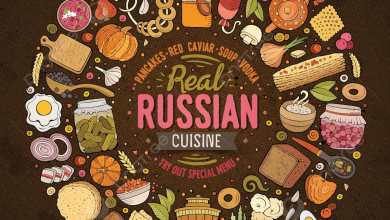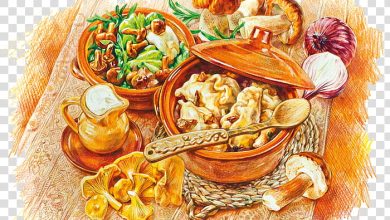The most popular food in Russia
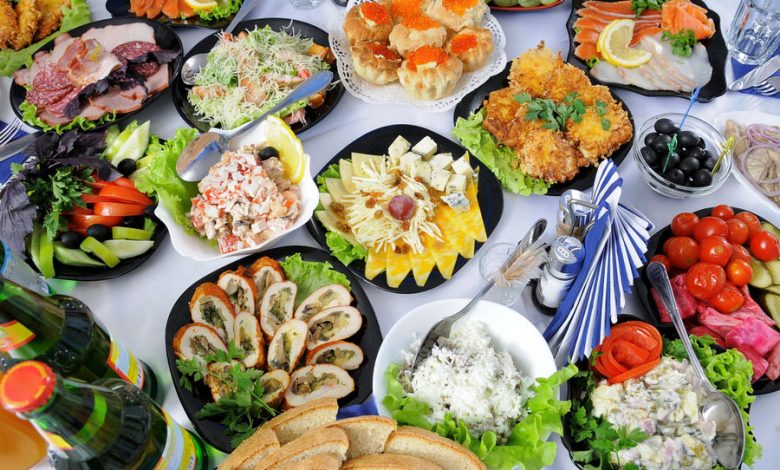
10. Chips
The American delicacy has taken root in our territory, and no wonder – this is a delicious snack for beer (Russians drink this alcoholic drink most of all; for example, in 2020, about 8 billion liters of beer were drunk, and about 1.2 billion liters of spirits) . And it’s also nice to crunch them while sitting in front of the TV or with friends while walking.
9. Baby food
The baby food market is growing by an average of 7% per year worldwide. Moreover, the concept of “baby food” includes both breast milk substitutes, and all kinds of vegetable and fruit purees, cereals and canned meat. And only 7% of the baby food supplied to the shelves of Russian stores is produced in our country.
8. Pork
But “pork” import substitution is in order – judging by the results of 2019, Russia completely abandoned imported pork. The meat that we see in stores is Russian products, if we are not talking about any rare and exotic delicacies. And, most importantly.
pork is cheaper than beef, which is why it is bought much more often. However, since the beginning of the year, pork, like other products, has not escaped a rise in price. According to experts, the reason is not only in the unfavorable coronavirus environment, but also in swine fever. In several major pig-breeding regions of Russia, about 500,000 heads of diseased animals had to be slaughtered.

7. Chicken eggs
What is not made from eggs! In addition to being consumed in their natural form (boiled or fried), they are also an indispensable component of many dishes, from salads to pastries and even cocktails. Eggs are also salted or pickled, used to make mayonnaise and meringue cakes. It can be said without exaggeration that chicken eggs are one of the pillars of human nutrition around the world. Alas.
problems in the poultry industry could not be avoided – along with the human coronavirus, the expanses of the Russian Federation, and especially the central and southern regions, where chicken production is mainly concentrated, were struck by bird flu. That is why eggs, chicken meat and offal have risen in price so much, and will rise in price in the near future.
6. Potato
In general, in Russia, semi-finished products begin to give way to products that have not been processed. According to experts, this is due to the transition to remote work in many areas and mainly home cooking. And what is the basis of home nutrition of the average Russian? That’s right, potatoes. Compared to other starchy vegetables, potatoes are among the lowest in calories. However, its energy value increases significantly when cooked with fats: potatoes absorb them perfectly; for exampl.
, there are 7 times more calories in chips than in the “original” tuber. We also add that in winter, potatoes are one of the most valuable sources of vitamin C for the human body. And although the tuber itself does not contain so much of it (and heat treatment reduces the content of this vitamin even more), however, the amount in which we consume potatoes more than compensates for this deficiency. When peeled potatoes are boiled in water, the loss of vitamin C is up to 40%, while potatoes protected by the skin lose only 10%.
5. Cucumbers
According to marketing experts, vegetables have risen in price the most since the beginning of 2021. For example, to crunch a fresh cucumber, you will have to pay 17.5% more than in 2020. Perhaps that is why, along with tomatoes, cucumbers are among the top five foods that Russians spend the most money on.
4. Bread
In Russia, bread is one of the most important food products, the demand for which remains stable throughout the year. True, recently Russians have begun to follow the general fashion – the rejection of the consumption of flour products, as they are associated with the appearance of excess weight. Therefore, bread is now eaten on average less than, say, 15 years ago. But there is one subtlety here – the consumption of bread depends both on climatic conditions (the colder, the more bread eaters).
3. Tomatoes
In Russia, they began to eat more vegetables – since 2017, the amount of consumption of tomatoes and cucumbers per capita has increased by 9%. However, the pandemic and the resulting reduction in the income of the population, as well as the closure of many cafes and restaurants, where fresh vegetable salad was always on the menu, hit the greenhouse market hard.
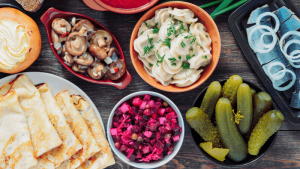
The government of the Russian Federation tried to cope with the problem of the accumulation of vegetables in warehouses by restricting imports. At the end of the year, the import of tomatoes from other countries was suspended, including Morocco, Turkey and immediate neighbors – Uzbekistan and Armenia. Therefore, the prices for greenhouse vegetables remained at the same level for almost the entire winter, until they rushed up in the spring.
2. Apples
In second place in popularity among Russian grocery purchases is another traditional product for our country – apples. They are prepared in many ways: fresh in salads, stewed as a side dish for fish or poultry dishes, dried for making drinks. They are also canned, baked, fermented, mashed and stuffed with poultry or sweet pies. But even Russians often have to eat foreign apples, since their own “capacities” are not enough. Although more than half of the fruit and vegetable areas are occupied by the production of apples.
1. Bananas
Topping the list of foods that Russians spend the most money on is the “tropical potato,” which makes up about a third of the total number of fruits imported into Russia. However, if in the tropics bananas are used like potatoes – they are boiled, fried, added to stews, even chips are made – then in our country they are most often consumed raw, as a treat.
Therefore, in Russia (as well as throughout the Northern Hemisphere), most bananas are eaten in winter, when other seasonal vegetables are too expensive. And bananas are even cheaper than apples. True, the overseas fruit on its way to Russia could not avoid difficulties. One of the main suppliers of bananas to Russia, Ecuador, is experiencing a crop failure, which has led to an increase in wholesale prices by almost one and a half times. However, as experts say, there is no need to worry yet – the situation should return to normal by mid-May.F

